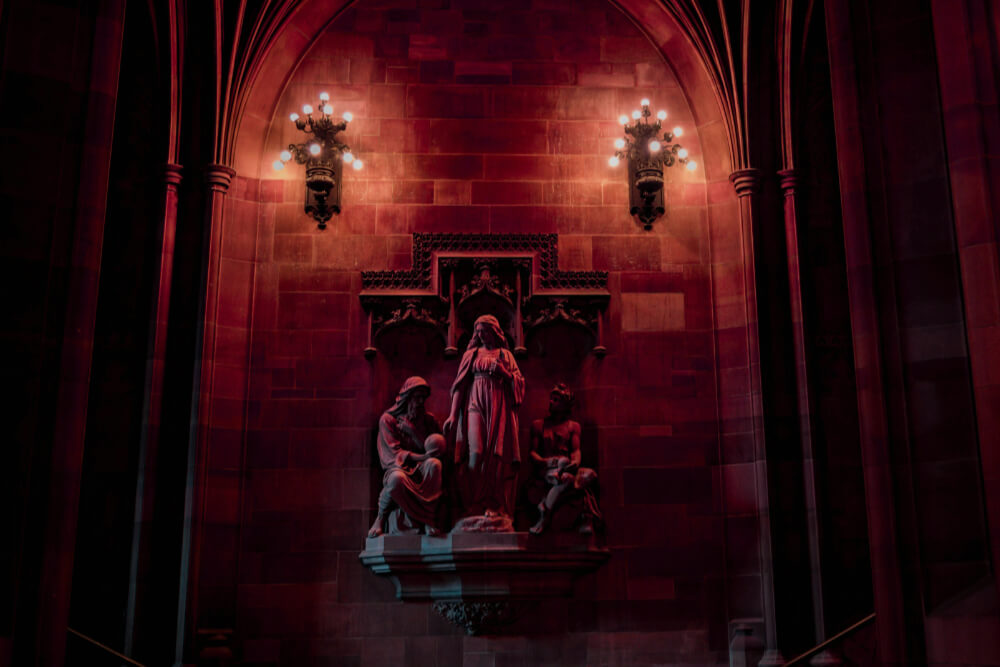We’re well into spooky season and this year, I’m really going all-in. I’ve watched several horror movies and books, and am especially having a grand time reading gothic novels. But as I was curled up with Wuthering Heights the other evening, it occurred to me that I’d never written a post exploring the definition of gothic fiction, one of my favorite genres of all time. So here we are. Let’s step past those old mansion doors and explore.
How I See Gothic Fiction
So what do I think gothic fiction is?
Let’s start with my favorite definition: Annie Neugebauer’s, in her blog post What Is Gothic Fiction? “At its very root, gothic fiction is a blend of romance and horror. Love and fear. Beauty and grotesquerie. It uses this contrast to heighten each.”
This definition gets at the heart of what I love about gothic fiction and how I think about it when writing. Honestly, you can just read Neugebauer’s blog post and get a stellar run-down on gothic fiction.
But of course, there are staples of the genre without which, it can be hard to recognize a story as gothic. We’re talking tortured villains and antiheroes, beautiful maidens, paranormal elements (ghosts, vampires, etc.), and of course, the setting of grandeur and decay—usually an old mansion or a castle.
To me, a story is gothic if its core is made up of that blend of romance (and here, I mostly mean romanticism, though love stories can feature heavily) and horror and it utilizes at least some common tropes of the genre, be it a Byronic hero, grandeur in decay, a family curse, or one of the many, many other tropes.
Digging Deeper: Other Definitions of Gothic Fiction
Well, you know what I think gothic fiction is, more or less. But how do other sources describe gothic fiction?
Wikipedia
Let’s start with good old Wikipedia. It describes gothic fiction as “…a loose literary aesthetic of fear and haunting.”
Bleh. How bland and uninspiring. I don’t think this definition gets at the heart of gothic fiction. It gets better when it goes on to explain, “Gothic fiction is characterized by an environment of fear, the threat of supernatural events, and the intrusion of the past upon the present.”
Let’s try a few definitions from books I own on gothic fiction.
The Oxford Book of Gothic Tales
The Oxford Book of Gothic Tales by Chris Baldic describes gothic fiction this way: “…It seems to work by intuitive suggestion rather than by any agreed precision of reference.” The author later says, “For the Gothic effect to be attained, a tale should combine a fearful sense of inheritance in time with a claustrophobic sense of enclosure in space, these two dimensions reinforcing one another to produce an impression of sickening descent into disintegration.”
I absolutely agree that this encroaching of the past upon the present in an enclosed space is integral to the gothic effect. The author talks more about this a little more clearly later:
“A Gothic tale will invoke the tyranny of the past ( a family curse, the survival of archaic forms of despotism and of superstition) with such weight as to stifle the hopes of the present (the liberty of the heroine or hero) within the dead-end of physical incarceration (the dungeon, the locked room, or simply the confinements of a family house closing in upon itself).
He goes on to be even more (somewhat wryly) concise by saying, “Gothic fiction is characteristically obsessed with old buildings as sites of human decay.”
Writing Gothic Fiction
In Writing Gothic Fiction by Rayne Hall, the author notes “…in the case of Gothic Fiction, [the boundaries between it and different genres and subgenres] are especially fluid.” Instead of giving a definition, Hall describes elements of Gothic fiction: “Rich in action, emotion, and suspense…” “Gloomy old houses, brooding heroes, windswept landscapes, villains, vampires and ghosts reveal[ing] the secrets of their forbidden passions.” “Dark twists and intense emotions.”
The Gothic
A J Blakemont’s The Gothic also describes gothic fiction by its tropes: “Their plot was set in a distant past (medieval period or Renaissance) and involved some dreadful secret or romantic intrigue (often both). The list of main characters included a villain (aristocrat or cleric), a young and vulnerable heroine, and a valiant “Prince Charming” she unavoidably fell in love with. All sorts of frightening experiences awaited the protagonists, and Gothic buildings (castles, churches, abbeys) always contained secret passages and skeletons hidden in chests and closets.”
Blakemont doesn’t consider later works by authors like Mary Shelley and Poe as gothic fiction but rather dark Romantic fiction. But she does consider them to have a Gothic aesthetic and to be part of the Gothic tradition. She explains, “The Gothic aesthetic often works by establishing an arresting contrast between the beautiful and the sublime.” And by “sublime” she means “terrifying.”
I also find it relevant that she talks about how gothic fiction is “particularly suitable to create suspense” and that it “creates an atmosphere where the sense of danger is somehow subdued. There is no immediate threat, but we know it’s there, lurking in the shadows.”
Conclusion
Okay, time to leave this spooky castle. At the end of the day, I agree with all of these definitions of gothic fiction. As Chris Baldic and many others say, gothic fiction is more of a vibe than a strictly defined genre with unimpeachable rules like romance. You go to it for a certain vibe that may shift slightly depending on your personal tastes.
Personally, I’m here for that delicious blend of romance and horror, splendor and decay, beauty and monstrousness. I think most gothic horror fans want the same thing, more or less.

